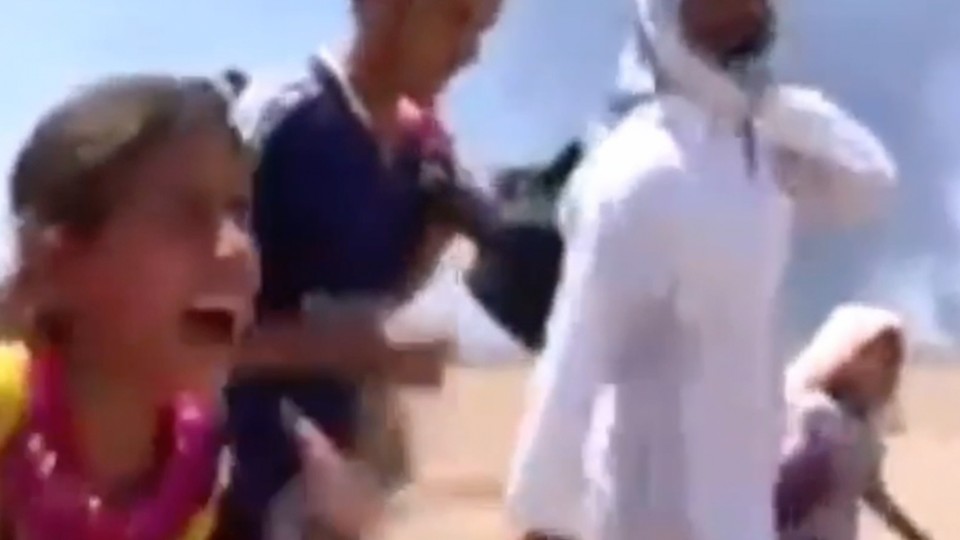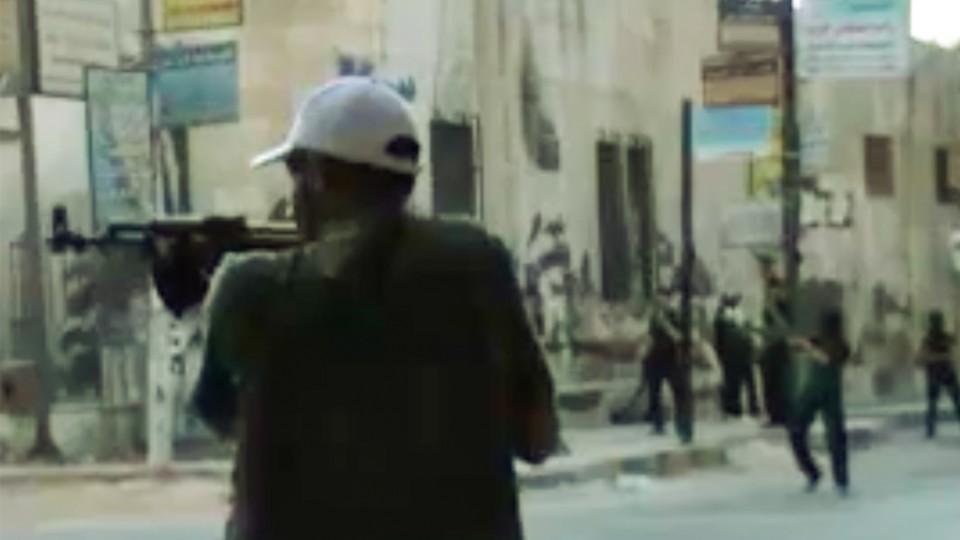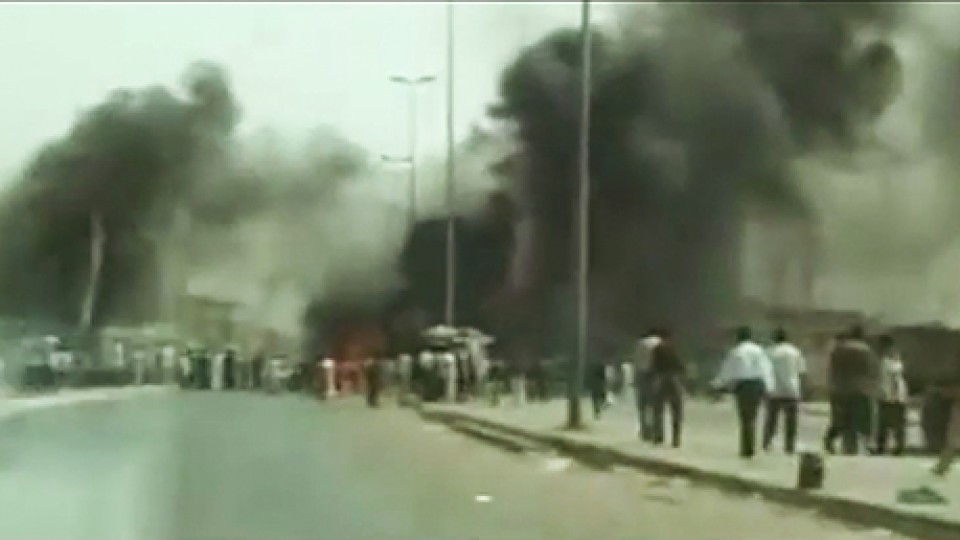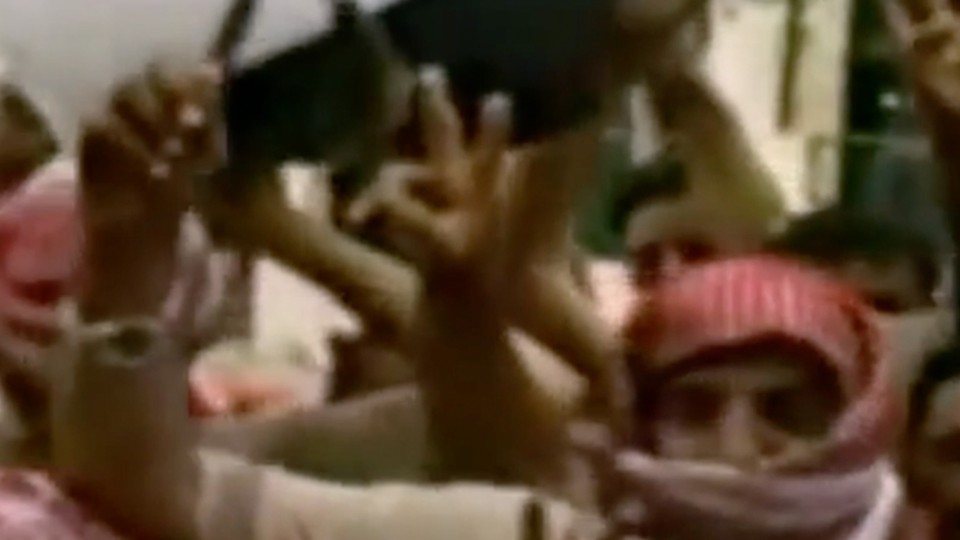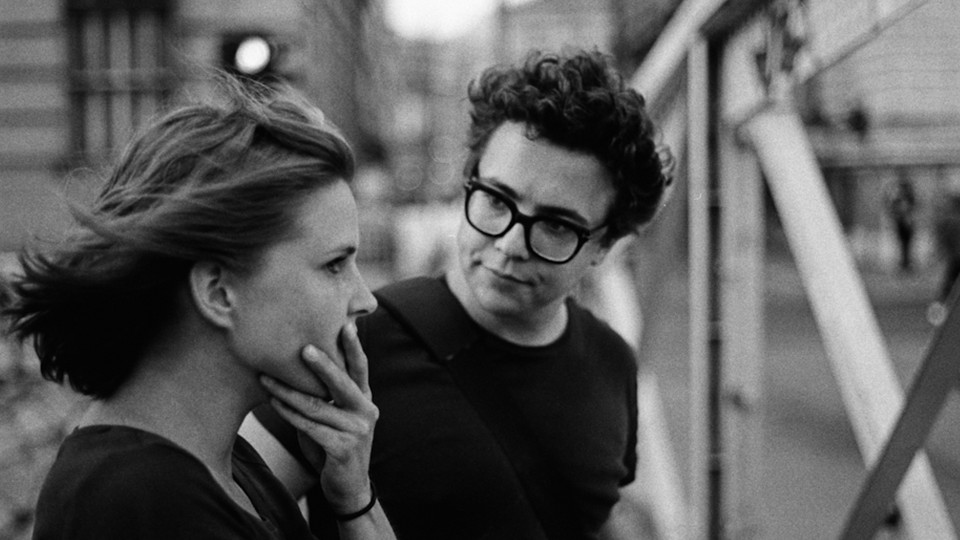Matthias Krepp and Angelika Spangel have assembled video material from digital channels with commentaries and accounts from
Iraqi and Syrian refugees now living in Austria, forming a collage about the war. SAND AND BLOOD is an attempt to employ the gripping transposition of images and the voices of witnesses to convey some sense of the unimaginable
reality of everyday life dominated by violence.
I remember a workshop discussion during the development process of SAND AND BLOOD. You had an initial idea, but it ended up moving very far in a different dimension. What was your first concept for the film?
Where did it take you in the end?
ANGELIKA SPANGEL: We approached the subject with a very open mind, and there was an extremely extensive research phase before we held any interviews.
On our first visit to the refugee camp we took a camera with us. But it quickly became apparent that we would use found footage.
When we did some initial editing and attempted to solidify the dramaturgical structure, we became aware of the incredible
potential of these videos. There was then an intermediate phase, when we had the idea of filming our own material for certain
sections, but finally we took the radical step of deciding to put together a film consisting entirely – on the visual level
– of found footage material.
MATTHIAS KREPP: Our initial hesitation was also connected to a certain insecurity about going all the way. On the one hand we were fascinated
by the videos, but on the other hand we first had to establish whether the concept could really be carried off.
What are the sources of the video material? Who should take credit for the material? Did your interview partners contribute
a lot towards tracking down the visual material, or was it generally the result of your own research?
ANGELIKA SPANGEL: The majority of it was derived from our own research, although of course our conversations with the refugees provided us
with important ideas. In many cases we showed videos we had found to selected protagonists, because their commentaries provided
very interesting perspectives. In other cases we surprised them with our videos during conversations: an example of this is
the opening and closing sequences, showing the quiet, snow-covered streets of Damascus, which establish a framework for the
film. We knew this video would have great emotional significance for the person we were talking to. When he saw it he was
so overwhelmed that he needed to take a break before talking about it.
How would you describe the huge range of Internet platforms on this subject? To what extent are their backgrounds in journalism,
politics or propaganda?
MATTHIAS KREPP: For Syria in particular, it is hardly possible to draw a line between journalism and propaganda. This is partly because foreign
journalists from large media enterprises hardly dare enter the country. And you can basically classify the Syrian media networks
according to the parties in the conflict that they support. So the boundaries are really fluid. A lot of videos are placed
on the Internet by civilians, even if most of them also have political intentions.
To what extent do you become overwhelmed by the endless torrent of images?
ANGELIKA SPANGEL: There are times when the incredible amount of footage you see causes you to adopt a very objective distance, and you only
filter the images according to the criteria of the requirements you’ve adopted, in terms of content or technical standards.
But I do remember one moment when everything was overwhelming, when I'd been researching for four days and nights, and I was
completely overwhelmed emotionally.
MATTHIAS KREPP: I remember one IS section I had basically taken charge of. I had done a great deal of research for it, and the videos I watched
for that section were incredibly brutal. I was amazed myself at how objectively I could regard the material after a certain
point. You can't process the brutality and horror of those videos when you are exposed to them relentlessly like that.
Then I came across one video when three Alawis were stopped on the road by IS; it's towards the end of our film, although
we don't show it all. The video lasts 10 minutes, and from the first moment it is clear that the men are going to be killed,
but the terrorists stage a harrowing, sadistic interrogation. The acoustic quality of the video was pretty miserable, so translation
was really difficult. As a result I had to spend one evening watching the video again and again. That gave me plenty of sleepless
nights.
How did you cope with the linguistic barrier when you were watching the videos?
ANGELIKA SPANGEL: We had an interpreter; we met him right at the beginning of our research, and he supported us through the whole project.
We very much wanted to interview him as well, but unfortunately he just wouldn't agree to that. He didn't even want to be
credited by name. He supported us in absolutely everything: the research, the translations, selecting the material. Without
him we just wouldn't have been able to make the film.
How was the transition accomplished from a collection of videos to a structured film? How did the structure of four sections
emerge: Sadam’s Long Shadow/ God – Syria – Freedom/ The War of the Sects/ The Path of Jihad?
MATTHIAS KREPP: The process of collecting never really finished. Some sections of the film were completed at an early stage, while others
were only added gradually. The structure derived from the fact that we were looking for points of intersection between the
two countries, Iraq and Syria. As neighbouring lands they are closely connected historically, which you can also see from
the current cross-border conflict in areas controlled by IS. The timeframe we adopted, from the US invasion of Iraq in 2003
to the current situation in Syria, covers the development which has culminated in the barbarism of IS and has now reached
its peak. If Iraq had not been destabilised, it's quite possible there would not be any Islamic State today, and without the
war in Syria, IS would almost certainly have remained a local phenomenon.
Structuring the film in four sections was based simply on the need to make it easier for viewers to comprehend the historic
and geographical situation. The first chapter is completely concerned with Iraq, the second exclusively with Syria, while
in the third section (The War of the Sects) and the fourth (The Path of Jihad) we start interweaving the subjects which relate to both countries: the religious conflict and IS, which operates on a cross-border
bases. The difficulty we had to confront was the fact that the film doesn’t feature any sort of “objective” explanation, but
at the same time we had to create some sort of level of comprehension.
How do you create the coherence between the spoken texts and the imagery?
ANGELIKA SPANGEL: The really tricky balancing act is to take a blurred, shaky video and create enough clarity so the audience can evaluate
visually what is going on and at the same time concentrate on a voice which sometimes refers directly to the pictures on the
screen but in other places describes experiences which are only peripherally connected with the images. The challenge is to
ensure that those two levels don't move too far apart at these places.
MATTHIAS KREPP: There is one particularly difficult place where a Syrian is describing being mistreated in prison. There are videos from prisons,
but they're incredibly brutal and very explicit. We adopted a structure where the level of violence increases during the film,
so at this place we decided quite deliberately to use a video which is only indirectly connected to the account of the protagonists.
You see people in the street being arrested and mistreated, while the voice is talking about his experience in prison.
Which criteria did you decide to adopt with regard to the visual quality of the videos? To what extent were you pushing back
borders there?
ANGELIKA SPANGEL: Naturally we constantly had to ask ourselves whether we could use videos on a large screen which had been made for small
displays, whether that would be acceptable. But we always liked the abstraction that pictures of inferior quality gain when
they are placed on such a large space.
Earlier you described a sensation you experienced which is clearly felt by the audience as well: being overwhelmed. Was one
of your intentions with this project to overwhelm the audience, on the basis that the conflict simply exceeds what can be
comprehended?
MATTHIAS KREPP: I wouldn't really say we set out to make something that was overwhelming for the audience. The form we chose made it easier
for us to accept that the audience may be overwhelmed, because this isn't a film that intends solely to provide information,
where every detail has to be clearly understood. It was always a balancing act, but we tried very hard not to cross the threshold
of what was really unacceptable. And after some places it simply felt right to let a breath of air in. It's my impression
that if you go along with the concept and the advantages it provides – which is a direct insight from the perspective of people
who live and fight there – then to a certain extent you have to accept that it's going to be overwhelming in places.
What effect does this work have on you personally, when you have to submerge yourself for such a long time in a complicated,
violent conflict?
ANGELIKA SPANGEL: We often talk about that. It certainly made us grow up a lot. We spent two and a half years focusing on the subject. It revealed
a whole world to us.
MATTHIAS KREPP: What impressed me so much about the interviews we held was that the people we were talking to, who had been through such terrible
adversity, were psychologically sound and able to reflect maturely on their experiences. Our interpreter, who became our friend,
is a few years younger than us, and he often described how living in that world took on a kind of normality. He would meet
his girlfriend once a week: they were separated by the front line. They got into the habit of going for dinner each week.
When they were deciding where to meet, they would look at the recent bombing pattern: based on the assumption that it would
be unlikely for the same place to be bombarded twice in a row, they would always meet somewhere that had just been hit by
bombs. Today, when he looks back from a distance, he can hardly comprehend how he was able to treat that exceptional situation
as if it were somehow normal.
ANGELIKA SPANGEL: We were in regular contact with our friend’s mother by Skype, and naturally we were interested in seeing the live pictures
of the war that she could show us
and she asked us to show her live images of the village of Hallstatt, while she was trapped
in that Syrian village. We found experiences like that extremely striking, and it gave us the impression – even though it
may sound banal – that the world is getting smaller inside your own head.
MATTHIAS KREPP: One of our goals, and I hope we succeeded here, was to make a film permitted to us as Europeans. It was always important
for us that the opinions of the people we talked to should be presented without any value judgements, even if they were contradictory;
although many of them are now our friends, we wanted to keep a certain distance in our perspective.
ANGELIKA SPANGEL: Through our research, the books we read and the conversations we had we were able to become familiar with a great deal, but
it was always crucial for us that, as filmmakers, we should reflect our external perspective.
Interview: Karin Schiefer
July 2017
Translation: Charles Osborne

